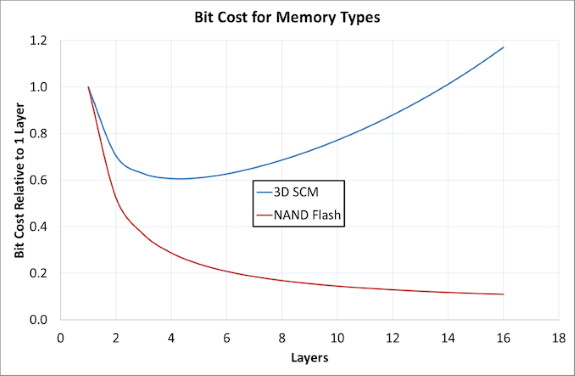
Posted on Tuesday, December 31 2019 @ 16:40 CET by Thomas De Maesschalck
At a recent International Electron Devices Meeting (IEDM) talk, Kioxia (Toshiba Memory) shared its thoughts about 3D stacked memory like the 3D XPoint technology that was invented by Intel and Micron. Kioxia doesn't see a future in 3D stacked memory because it doesn't scale well. While 3D NAND is a proven technology that results in cheaper manufacturing, adding more layers to 3D stacked memory doesn't seem to have the same benefit. Without significant technological advances, it may not be economically feasible to scale 3D stacked memory:
But for 3D Stacked SCM technologies, we still haven’t seen them expand beyond a single layer device in the market. Kioxia’s data shows that while its BiCS flash reduces down to an asymptotic value at cost per bit as we go past 10 layers, the company says that 3D Stacked SCM will at best only reduce to 60% of the cost per bit for a 4-5 layer device compared to a single layer – with the data rising from there. This is down to the increased cost per layer, the area loss required, and the yield decrease based on using complicated cell technologies that don’t have the benefit of decades of improvements. In order to build 3D Stacked memory, it's a painstaking process of layer upon layer, which leads to decreases in yield with each additional step.
Further details about the talk
at AnandTech


